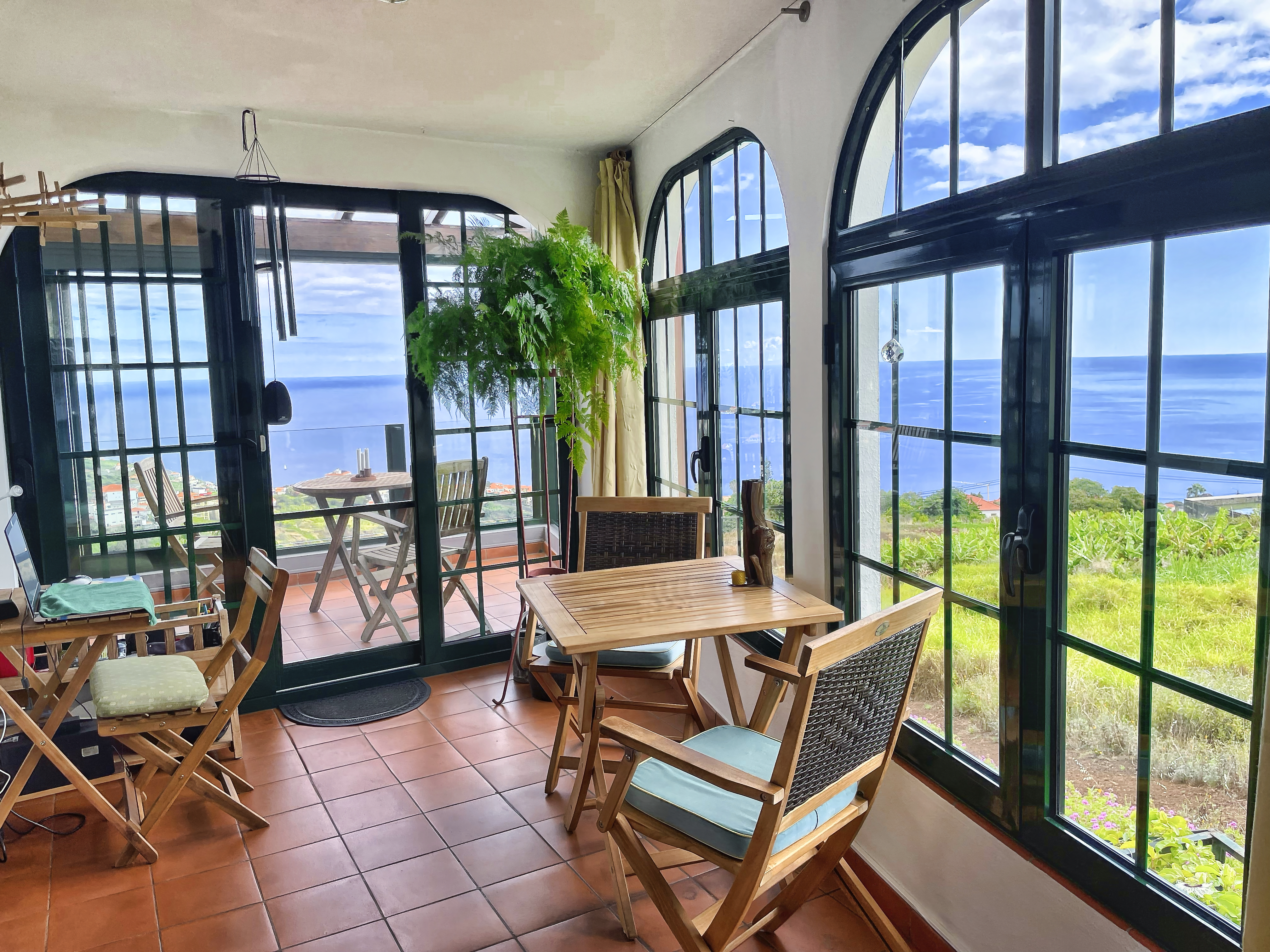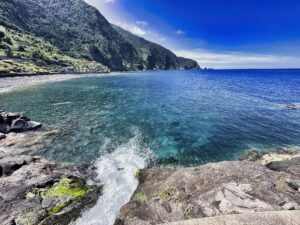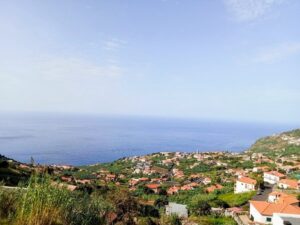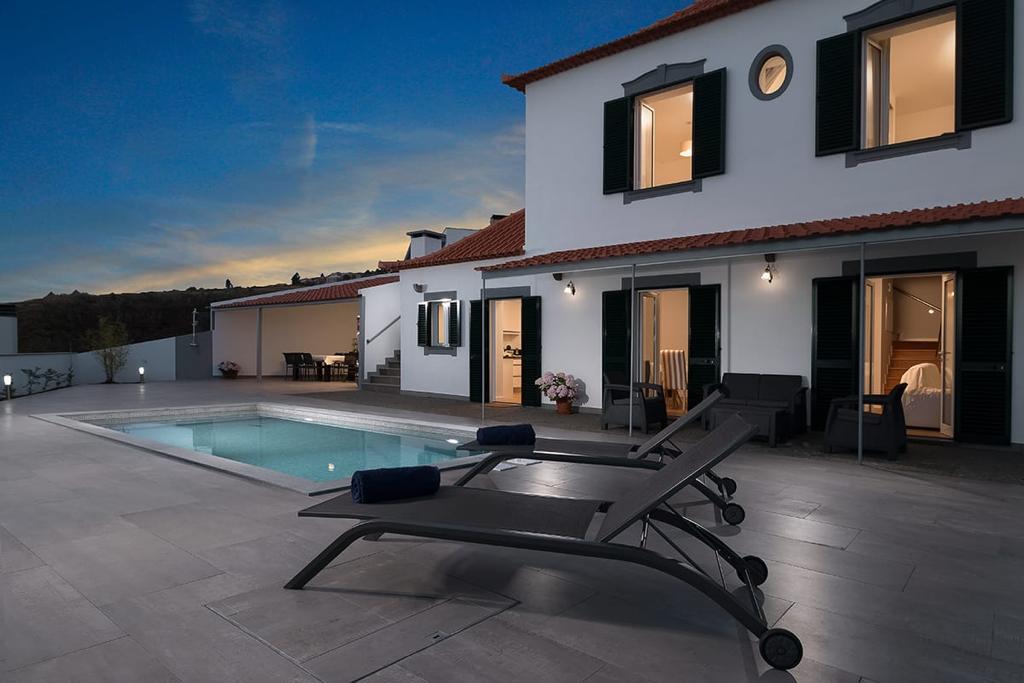
If you’re considering buying a house or Quinta in Madeira, understanding Restoration requirements is crucial. Our guide provides you with some points to consider before embarking on your exciting journey.
Introduction
Madeira’s and Portugal’s old houses and quintas stand as silent witnesses to centuries of rich history, embodying the cultural heritage and architectural marvels of the region. From the quaint cobblestone streets of Lisbon to the lush landscapes of Madeira, these traditional dwellings exude an undeniable charm that captivates residents and visitors alike.
Old houses, with their weathered facades and time-worn interiors, tell stories of generations past, offering a glimpse into the country’s vibrant past. Quintas, nestled amidst rolling hills and vineyards, evoke a sense of tranquility and nostalgia, reflecting Portugal’s deep-rooted connection to its land and traditions.
However, beyond their aesthetic allure, these historical properties hold significant cultural value that transcends mere bricks and mortar. They serve as tangible links to Portugal’s rich heritage, reminding us of the craftsmanship and ingenuity of our ancestors.
In a rapidly modernizing world, the preservation of old houses and quintas is becomming more important. It is not merely about maintaining architectural relics but safeguarding our cultural identity and heritage for the appreciation of future generations. Each restoration project is a testament to our commitment to honor the past while embracing the future.
In this article, we delve into the art of renovating old houses and quintas in Portugal, exploring the challenges, rewards, and timeless allure of breathing new life into these treasured relics. Join us on a journey through history as we uncover the secrets of preserving our architectural heritage for generations to come.
Assessment and Planning
Before embarking on the journey of renovating an old house or quinta in Portugal, it’s essential to conduct a comprehensive assessment to understand the scope of work and potential challenges that lie ahead. This initial step lays the foundation for a successful renovation project and ensures that the end result meets both aesthetic and functional requirements.
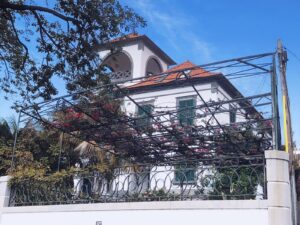
One of the primary reasons for conducting a thorough assessment is to identify any structural issues that may compromise the integrity of the property. Over the years, old houses and quintas may suffer from wear and tear, including foundation issues, dampness, or rotting woodwork. By addressing these concerns early on, you can prevent further damage and ensure the longevity of the renovated property.
In addition to structural considerations, it’s crucial to assess the condition of plumbing, electrical wiring, and other essential systems. Outdated plumbing and electrical systems pose safety hazards and may need to be upgraded to meet modern standards. Identifying these issues during the assessment phase allows you to incorporate necessary improvements into your renovation plan.
Once you’ve identified potential challenges and areas for improvement, the next step is to develop a renovation plan tailored to your specific needs and preferences. This plan should outline the scope of work, including any structural repairs, aesthetic enhancements, and upgrades to utilities and infrastructure. Collaborating with architects, engineers, and other professionals can help ensure that your renovation plan is comprehensive and feasible.
Setting a realistic budget is another critical aspect of the planning process. Renovating an old house or quinta in Portugal can be a complex and costly endeavor, especially when dealing with historical properties that require careful preservation. By establishing a budget upfront and accounting for potential unforeseen expenses, you can avoid financial stress and ensure that your renovation project stays on track.
It is best to consult with the right professionals for your project to have a clear understanding of the requirements of your restoration, underlining the main issues, and changing aesthetics. At MHK Real Estate, we have long-standing relationships with our personally chosen professionals that have come through for us and our clients time and time again.
In summary, conducting a thorough assessment and developing a comprehensive renovation plan are essential steps in the process of renovating old houses and quintas in Portugal. By identifying structural issues, addressing concerns related to utilities and infrastructure, and setting a realistic budget, you can lay the groundwork for a successful restoration that preserves the charm and authenticity of these historical properties.
Preserving Authenticity
One of the most enchanting aspects of old houses and quintas in Portugal is their authentic character and charm, which tell the story of generations past and reflect the country’s rich cultural heritage. Preserving this authenticity is essential in maintaining the unique identity and allure of these historical properties. Retaining original features such as tiles, wooden beams, and stonework is paramount in honoring the craftsmanship and craftsmanship of the past.
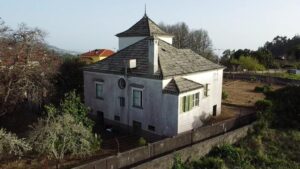
These elements not only add to the aesthetic appeal of the property but also serve as tangible reminders of its storied history. Whenever possible, efforts should be made to repair and restore these features rather than replacing them, as it helps maintain the authenticity and charm of the property.
Incorporating traditional Portuguese design elements into modern renovations is another way to preserve the authenticity of old houses and quintas. From azulejos (hand-painted ceramic tiles) to wrought iron balconies, there are numerous architectural and decorative elements that pay homage to Portugal’s cultural heritage. Integrating these design elements into the renovation project can help create a seamless blend of old-world charm and modern comfort.
When embarking on a renovation project, it’s essential to work with architects and designers who have experience in preserving historical properties. They can offer valuable insights and expertise in retaining the authenticity of the property while meeting modern-day needs and standards. Additionally, sourcing materials locally and using traditional building techniques can further enhance the authenticity of the renovation.
In essence, the pursuit of authenticity in renovating old houses and quintas in Portugal is a homage to the timeless elegance of bygone eras, coupled with a desire for contemporary comfort and luxury. This delicate balance between preserving the essence of the past and infusing modern functionality and opulence defines the aspiration of discerning individuals with refined tastes. By meticulously safeguarding original features, seamlessly blending traditional design elements, and collaborating with seasoned professionals, one can ensure that these historical properties exude enduring charm and sophistication, captivating admirers for generations to come.
Upgrading Utilities and Infrastructure
When renovating old houses and quintas in Portugal, upgrading utilities and infrastructure to modern standards is not only a matter of convenience but also essential for ensuring the safety and functionality of the property. While preserving the historical charm of the building might be your main goal, it’s equally important to integrate modern amenities that enhance comfort and livability.
Similarly, upgrading plumbing systems is crucial for ensuring adequate water supply, proper drainage, and sanitation. Old plumbing fixtures may be prone to leaks, corrosion, or poor water pressure, which can lead to costly repairs and inconvenience. Installing new plumbing lines and fixtures while preserving the original aesthetic can enhance the functionality and comfort of the property.
Incorporating Smart Home Technology.
Furthermore, smart security systems offer enhanced protection for historical properties, allowing homeowners to monitor and control access remotely. Video doorbells, motion sensors, and surveillance cameras provide peace of mind while preserving the architectural integrity of the property.
When integrating smart home technology, it’s important to do so in a way that respects the historical character of the building. Concealing wiring and devices where possible and selecting discreet fixtures can help maintain the authenticity of the space while enjoying the benefits of modern technology.
In summary, upgrading utilities and infrastructure is a necessary aspect of renovating old houses and quintas in Portugal. By updating electrical wiring, plumbing, and heating systems to modern standards while incorporating smart home technology, you can create a space that seamlessly blends the charm of the past with the comforts and conveniences of the present.
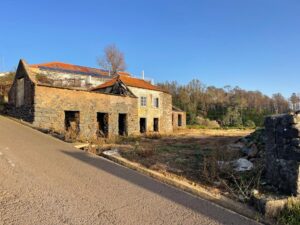
Choosing Sustainable Materials.
In recent years, there has been a growing emphasis on sustainability and eco-conscious practices in the field of renovation. When it comes to renovating old houses and quintas in Portugal, selecting eco-friendly and sustainable materials not only reduces environmental impact but also enhances the overall quality and longevity of the property.
One of the key benefits of using eco-friendly materials is their reduced carbon footprint and environmental impact compared to traditional building materials.
Materials such as reclaimed wood, recycled glass, and natural stone minimize the depletion of natural resources and contribute to a healthier environment. Additionally, eco-friendly materials often require less energy to produce and emit fewer harmful chemicals, promoting better indoor air quality for occupants.
One of the key benefits of using eco-friendly materials is their reduced carbon footprint and environmental impact compared to traditional building materials. Materials such as reclaimed wood, recycled glass, and natural stone minimize the depletion of natural resources and contribute to a healthier environment. Additionally, eco-friendly materials often require less energy to produce and emit fewer harmful chemicals, promoting better indoor air quality for occupants.
Furthermore, sustainable materials are known for their durability and resilience, making them ideal choices for historical properties that require long-term preservation. By investing in high-quality, sustainable materials, you can ensure that your renovation project withstands the test of time and maintains its aesthetic appeal for years to come.
When selecting materials for renovating old houses and quintas in Portugal, it’s essential to consider locally-sourced options that complement the traditional Portuguese architecture. Locally-sourced materials not only support the regional economy but also blend seamlessly with the natural landscape and architectural heritage of the area.
For example, Portuguese limestone and granite are popular choices for exterior cladding and paving, offering timeless elegance and durability. Cork, a renewable resource native to Portugal, is prized for its insulating properties and versatility, making it an excellent choice for flooring and wall coverings. Additionally, traditional Portuguese tiles, known as azulejos, add color and character to interior and exterior spaces while celebrating the country’s rich cultural heritage.
Incorporating sustainable materials that are locally sourced not only adds authenticity to the renovation project but also fosters a deeper connection to the surrounding environment and community. By choosing materials that reflect the unique character of Portugal’s landscapes and architectural traditions, you can create a renovation that honors the past while embracing a more sustainable future.
Landscaping and Outdoor Spaces in Madeira
Enhancing the outdoor spaces of old houses and quintas in Madeira is a captivating endeavor, shaped by the island’s lush landscapes, rich history, and unique subtropical climate. Thoughtful landscaping and garden design not only complement the architectural features of the property but also celebrate the island’s natural beauty and cultural heritage.
Madeira’s subtropical climate offers an abundance of opportunities for creating vibrant and thriving outdoor spaces. With mild temperatures year-round and ample rainfall, the island provides an ideal environment for a diverse range of plant species to flourish. By selecting the right flowers and plants, you can create gardens that boast blooming flowers and lush foliage throughout the seasons, adding color and fragrance to the property’s outdoor spaces.
Native flora such as the Madeira Geranium (Geranium maderense), Bird of Paradise (Strelitzia reginae), and Bougainvillea (Bougainvillea spectabilis) are well-suited to Madeira’s climate and soil conditions. These plants not only thrive in the subtropical environment but also contribute to the island’s unique biodiversity and ecosystem.
In addition to native species, incorporating traditional Portuguese design elements into landscaping can further enhance the historical authenticity of the property. Terracotta pots, cobblestone pathways, and decorative tiles are common features in Madeiran gardens, echoing the island’s cultural identity and heritage.
Preserving existing foliage is paramount when landscaping old houses and quintas in Madeira. Mature trees such as Laurel (Laurus novocanariensis) and Canary Island Pine (Pinus canariensis), as well as endemic species like the Madeira Mahogany (Persea indica), are not only visually stunning but also provide essential habitat for native wildlife.
Ideas for landscaping old houses and quintas in Madeira are as diverse as the island itself. From formal gardens with manicured lawns and ornate flower beds to naturalistic landscapes with cascading waterfalls and exotic palms, the possibilities are endless. Incorporating features such as water features, pergolas, and outdoor seating areas can create inviting spaces for outdoor living and entertainment, allowing residents and visitors to fully embrace Madeira’s enchanting ambiance.
Ultimately, landscaping old houses and quintas in Madeira is about creating outdoor spaces that honor the island’s natural beauty, celebrate its cultural heritage, and provide a sanctuary for relaxation and enjoyment. By harnessing the abundance of flora and fauna that thrive in Madeira’s subtropical climate, you can transform the outdoor spaces of historical properties into captivating gardens that enchant and inspire all who visit.
Permitting and Regulations in Madeira
Navigating the permitting process for renovating historical properties in Madeira is a crucial step in ensuring a successful renovation project. Understanding and adhering to local regulations and guidelines for preservation are essential for protecting the integrity and authenticity of these cherished properties on the island.
The permitting process for renovating historical properties in Madeira typically involves obtaining approval from local authorities and heritage preservation agencies. This may include submitting detailed renovation plans, conducting historical assessments, and obtaining permits for specific alterations or additions to the property.
Adhering to local regulations and guidelines for preservation is paramount in safeguarding the cultural and architectural heritage of historical properties in Madeira. This may involve restrictions on exterior modifications, requirements for using traditional building materials and techniques, and limitations on changes to historically significant features.
For more detailed information on the permitting process and building regulations for renovating historical properties in Madeira, please refer to our article [link to article on permits and building regulations].
By understanding and complying with permitting and regulations, you can ensure that your renovation project not only meets legal requirements but also respects and preserves the unique character and charm of Madeira’s historical properties.
Working with the Right Professionals
When embarking on the renovation of historical properties in Madeira, hiring experienced professionals is paramount to the success and preservation of these cherished treasures. With their intricate architectural details and cultural significance, historical renovations require a level of expertise and attention to detail that only seasoned professionals can provide.
The importance of hiring experienced professionals for historical renovations cannot be overstated. These professionals possess the specialized knowledge and skills necessary to navigate the unique challenges posed by renovating old properties while preserving their historical integrity. From understanding traditional building techniques to navigating regulatory requirements, experienced professionals bring invaluable expertise to the table.
It’s essential to find reputable architects, contractors, and artisans with a proven track record in restoring old properties. At MHK REAL ESTATE, we have cultivated long-standing partnerships with professionals who have consistently delivered exceptional results for us and our clients. Their dedication to craftsmanship and attention to detail ensure that each renovation project is executed with the highest standards of quality and authenticity.
When selecting professionals for your historical renovation project, be sure to research their qualifications, review past projects, and ask for references. Look for professionals who demonstrate a deep understanding and appreciation for historical architecture and are committed to preserving the unique character and charm of Madeira’s historical properties.
By partnering with experienced professionals who share your vision and values, you can embark on your historical renovation project with confidence, knowing that your property is in capable hands.
Conclusion.
Renovating old houses and quintas in Portugal is a journey of rediscovery, appreciation, and preservation of the rich cultural heritage and timeless elegance that defines the region. From the picturesque landscapes of Madeira to the historic charm of its traditional dwellings, each renovation project offers an opportunity to celebrate Portugal’s architectural legacy.
For those with an appreciation for culture heritage and classic elegance, renovating old houses and quintas in Madeira is a labor of love and a commitment to honoring the past while embracing the present. It’s a chance to breathe new life into historical properties, infusing them with modern comforts and sustainable practices while preserving their authenticity and charm.
As you consider embarking on your own renovation journey, we invite you to join us in celebrating Madeira’s architectural heritage and embracing the timeless beauty of its old houses and quintas. At MHK Real Estate, we are dedicated to helping homeowners bring their renovation dreams to life with meticulous attention to detail, respect for tradition, and a passion for preserving Portugal’s cultural legacy.
Together, let’s embark on a journey of discovery and preservation, ensuring that Madeira’s old houses and quintas continue to enchant and inspire for generations to come.



